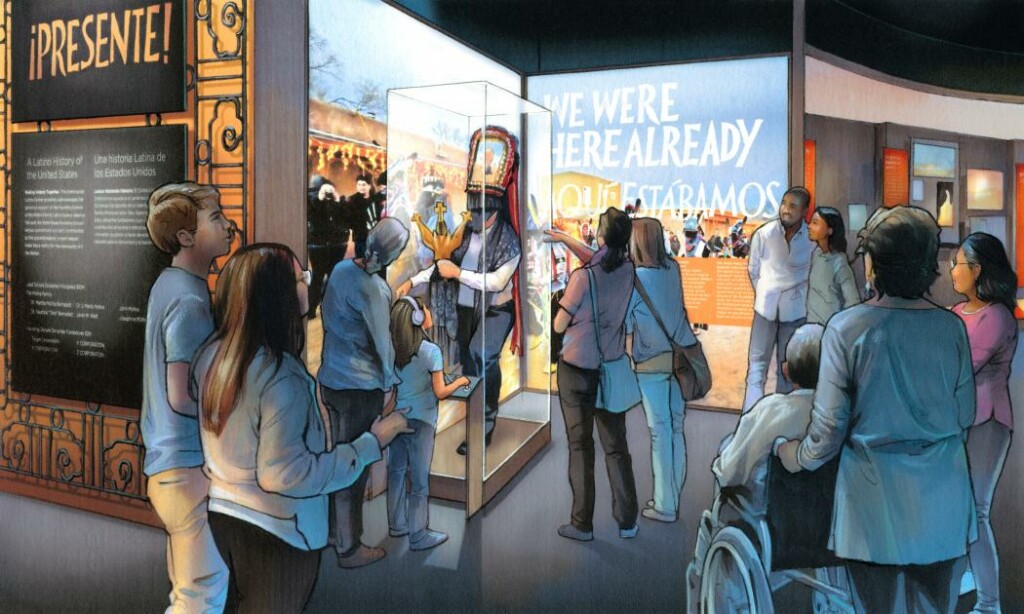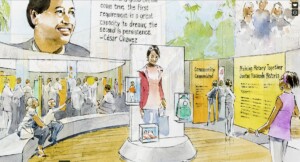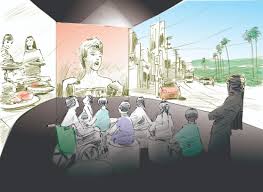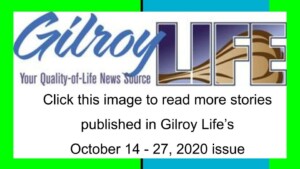Sidebar story: Congress takes steps to create national museum in D.C. honoring Latinos
Panetta hopes Cesar Chavez, Dolores Huerta and other civil rights activists will be celebrated

Concept art of the proposed National Museum of the American Latino.
By Vanessa Soto

Vanessa Soto
Congressman Jimmy Panetta, who represents parts of Gilroy, introduced legislation in July with his colleagues to establish a Smithsonian National Museum of the American Latino on the National Mall.
The museum was originally proposed in a 1994 Smithsonian report entitled “Willful Neglect.” The nonprofit group Friends of the National Museum of the American Latino strives to create the museum in the nation’s capital “to educate, inspire and encourage respect and understanding of the richness and diversity of the American Latino experience within the U.S. and its territories.”
“Latinos have been contributing to the building, shaping and defending of our nation since before its founding, but these indispensable stories of American history have largely been absent from our magnificent museums on the National Mall,” said Danny Vargas, chairman of the group’s board.

Concept art of the proposed National Museum of the American Latino.
By highlighting the contributions made by Latino icons, pioneers and communities to the American way of life, visitors will truly understand how they have shaped the nation, Panetta said.
“The Latino Museum would educate Americans and visitors from around the world on the innumerable contributions that Latinos have made to American history and culture,” he said.
Among the men and women who should be recognized at the Smithsonian museum are those who stood up in the quest for civil rights, he said.

Concept art of the proposed National Museum of the American Latino.
“If it was left up to me, I would want a whole wing dedicated to the works of the activism of Cesar Chavez, Dolores Huerta, and other members of the UFW (United Farm Workers), who have fought so hard for a group of people who are so important to our area in the Central Coast — and that’s our farm labor group.”
Panetta acknowledged the contribution of Latino men and women to the American economy. They help keep the nation financially strong. Before the COVID-19 pandemic the number of Latino business owners had grown 34 percent over the past ten years, he said. Latino businesses were contributing $500 billion to the economy in annual sales and were growing faster than the national economy.
Hispanic Americans are dedicated public servants, he said. They hold posts at the highest levels of the government of the United States, including one seat on the Supreme Court (Sonia Sotomayor), four seats in the Senate, and 43 seats in the House of Representatives. Congress is also home to the Congressional Hispanic Caucus whose members work to ensure Latino voices are heard at the federal level.

Concept art of the proposed National Museum of the American Latino.
“We have a number of very talented and very productive (Latino) politicians from Robert Rivas to Ana Caballero in the Senate,” Panetta said. “I am proud to work with their members as I work to ensure the federal government is working for Latino communities on the Central Coast. We have seen their members go on to serve as governor, presidential cabinet members, and more.”
The House passed legislation July 29 for the National Museum of the American Latino. The bill is now awaiting to be voted on by the Senate.
“I firmly believe that signing this type of legislation is the least we can do to demonstrate our understanding and our appreciation of the contribution of Hispanic and Latino members of our community and country,” Panetta said.


